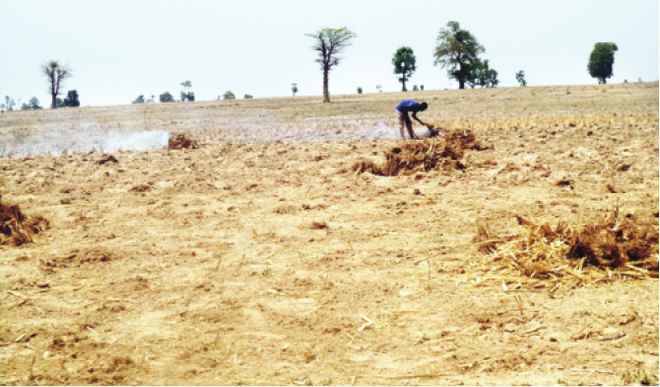We started late this year – Katsina farmers
Majority of farmers in Katsina State are planting their farms late this year due to delayed rainfall compared to previous years. Our reporter in the state reports that rain started late this year until in mid-June when it stabilised and farmers started tilling the soil. A large scale maize farmer in Danja Local Government Area, […]


Majority of farmers in Katsina State are planting their farms late this year due to delayed rainfall compared to previous years.
Our reporter in the state reports that rain started late this year until in mid-June when it stabilised and farmers started tilling the soil.
A large scale maize farmer in Danja Local Government Area, Alhaji Rabi’u Umar, said few of the farmers that took the risk of planting early were now immune from the threat of heavy rain on young plants.
“In previous years, we normally planted in May to early June because that was when the rain usually began steadily. The problem now is that the heavy downpour we are experiencing is surging our farms, washing away nutrients required by the young maize plants,” Alhaji Rabi’u said.
He added that young crops required light rain and shower to adequately have enough oxygen to blossom.
Alhaji Rabi’u further said maize/sorghum farms in lowlands and swampy areas were mostly affected compared to the ones on the highlands.
“Crops like rice and soybeans that need adequate moisture are benefitting more from the situation. Similarly, maize farms on highlands have little or no risk of the rain surge,” he added.
Another maize farmer and a retired agricultural worker, Mallam Umar Hamza Funtua, said for every problem there was a way of solving or mitigating it.
“It is true that heavy incessant rain affects young crops, but farmers should not only sit down fingers crossed waiting for the rain to subside. They should find a way of opening channels in the farms for the excess water to drain. In addition, more than adequate fertilizer, particularly NPK 15:15:15, is required to replace the washed away nutrients,” Umar Hamza advised.
He also drew the attention of farmers to the risk involved in planting soybeans in July, especially as the crop needs enough rainfall within the space of four months before harvesting.
“Normally, rain here stops in the first or second week of October, therefore, those planting soybeans in July are taking uncalculated risk because the crop takes good four months with adequate moisture to mature. The best time for planting the crop is in late May or first week of June everything being equal,” he cautioned.
This reporter observed that from Sabuwa to Katsina, there was no uniformity of planting due to the delayed rainfall. While in Sabuwa and Dandume axis many maize farmers have finished the first phase of their farming activities awaiting only the harvest period; in Funtua, Danja, Bakori and Malumfashi, majority of the maize farms are at the young stage, while few are just starting.
In Dutsinma, Kurfi, Batagarawa and Katsina axis, majority of the sorghum and millet farms were at the young stage, a situation that indicated that harvesting period might be staggered too.
